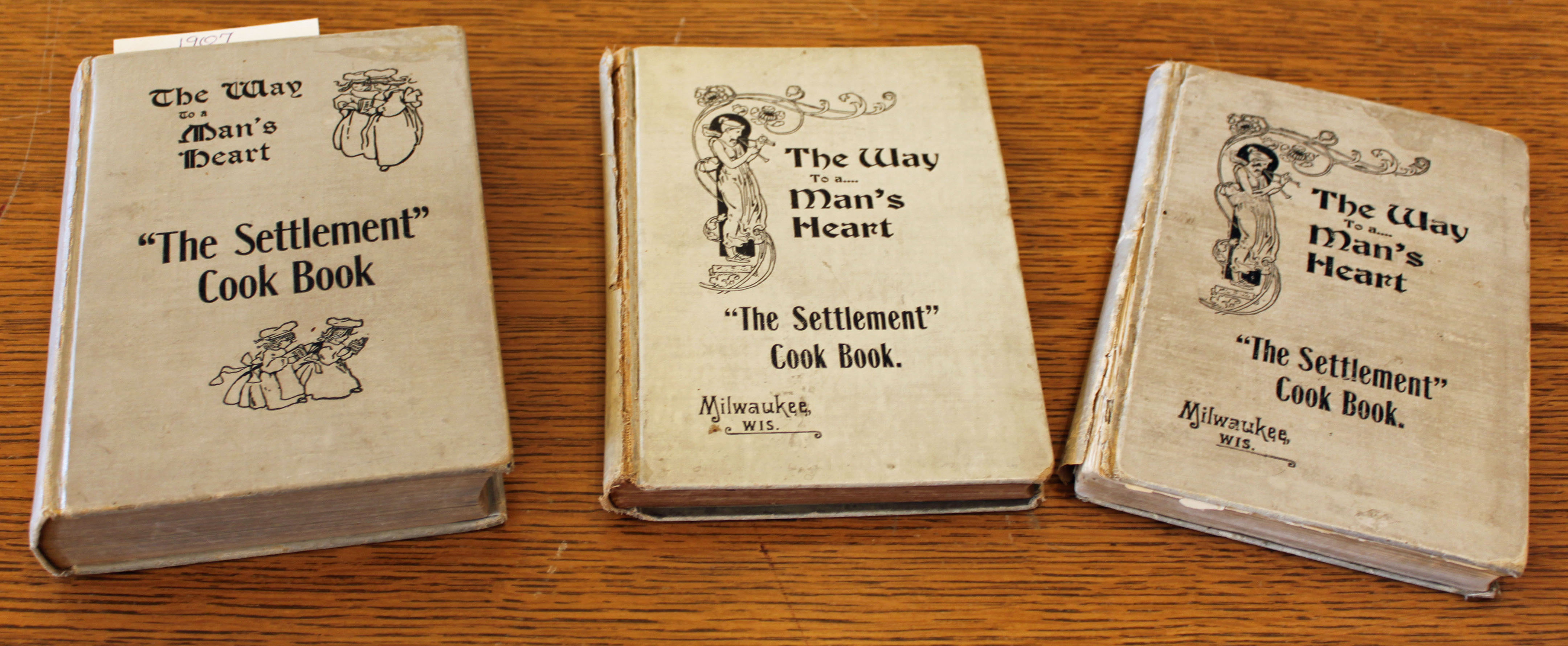 The first edition of The Settlement Cook Book was published on April 1, 1901 with an original printing of 1,000 copies. Copies not distributed to the settlement’s cooking school students were sold at the Boston Store in Milwaukee for 50 cents each and sold out within the first year.
The first edition of The Settlement Cook Book was published on April 1, 1901 with an original printing of 1,000 copies. Copies not distributed to the settlement’s cooking school students were sold at the Boston Store in Milwaukee for 50 cents each and sold out within the first year.
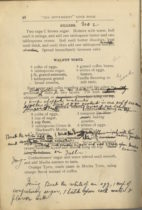
The first edition was a 174-page rough draft. No table of contents at the beginning of the volume provided organization for the book’s two sections—500 heirloom recipes collected from old family cookbooks and the 24 lessons from the Settlement’s cooking classes.
Cookbooks at the time used “pinches of this” and “dashes of that” as measurements in their recipes. What made The Settlement Cook Book unique was the dedication to scientific management and use of actual measurements. At the cooking school and in home, Lizzie Black Kander and others tested and perfected each recipe. On the pages of Kander’s personal copy of the 1901 cookbook, she cut recipes, added new ones, and made changes to existing menus. She tweaked measurements, clarified instructions, and made revisions for inclusion in the second edition.
1,500 copies of the 182-page second edition were ordered and published by Yewdale & Sons on September 10, 1903. With the second edition, Kander made many changes that became permanent to the cookbook. Major changes that became the new standard included an index at the beginning of the book as well as a making chapter one “Rules for Household.” Recipes from the margins of her personal copy of the first edition became the new norm in the second edition and onward.
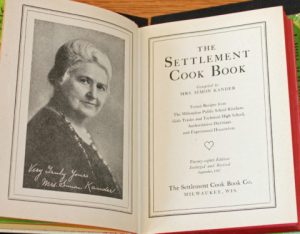
In 1907, the third edition expanded in size, volume, and price, selling 5,000 copies of the 391-page book for $1. Following the success of the third edition, Kander maintained much of the content into the later editions. Due to its financial success, the 3rd edition allowed for the inclusion of in-chapter pictures. Kander personally edited each subsequent edition of the cookbook until her death in 1940; all following editions honored her with a remembrance photograph with the caption “Very truly yours Mrs. Simon Kander.”
While the cooking classes at the Settlement observed kosher practices to attract and educate the recently emigrated Eastern European Jews, the cookbook was not kosher. Cooking classes at the Settlement needed to observe kosher practices to attract these Orthodox students, whereas The Settlement Cook Book was intended for a larger audience. Over the years, the Settlement Cook Book Board periodically received requests for specific recipes to be included in later editions of the cookbook, but according to Kander there was never a “cry” for a “Kosher textbook.”
In a 1933 radio interview, Kander was asked why she thought the cookbook had become so universally popular. Kander replied, “Because The Settlement Cook Book is primarily a home cook book. The recipes are tested in a home kitchen. They are practical, economical, and reliable. The directions are given in simple language and are easy to follow. Because of America’s cosmopolitan population, the dishes of all nationalities have been included.”
Listen below to the Settlement Cookbook’s segment on Wisconsin Public Radio’s Wisconsin Life.
Written by Elizabeth Matelski, May 2017.
READERS RESPOND
“These books were a staple in my family of home cooks dating back to my great grandparents who lived in Milwaukee from the beginning of the 20th century. My grandmother moved to Hartford, WI in the late 30s, bringing her Settlement cookbooks along. My mother brought them with her when she moved to Chicago in the 60s. Now in her late 70s she is opening them up to duplicate her favorite recipes made by her mother and grandmother for her grandchildren, most recently Schaum Torte from p. 427 of the book released in 1954. The covers are tattered but the contents remain bringing joy to our family going on 5 generations.” – Annie Aune
Special thanks to Ellie Gettinger and Michael Dettlaff.
Object history courtesy of Jewish Museum Milwaukee in partnership with the Milwaukee Public Library and the Milwaukee County Historical Society.
RELATED STORIES
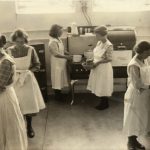
Roots of Milwaukee’s Settlement House

The Settlement
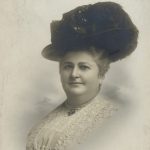
Elizabeth “Lizzie” Black Kander
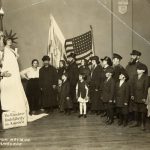

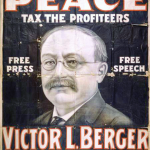


I’m glad the settlement cookbook is still being used. It did more to make both the men and women in my family the excellent cooks/home makers they are, than anything else. It is a right of passage in my family to be given one 4 generations now), especially if one is picked to receive one of the family’s treasured (and well -used vintage copies).
We are not Jewish, but my mother had worked as a cook/housekeeper for a Jewish family in Little Rock, AR, in the late 40s, to make enough money to pay her tuition fees for Philander Smith College (LR). She’d also just married my dad, who was working as a butler (of sorts) in the same home.
To say she knew little about cooking or cleaning a kitchen, beyond what was required on a backwoods farm, would be understatement. She grew up in the hills so was used to cooking and doing laundry over an outdoor wood fire. Gas and Electric appliances with hot and cold running water were a revelation for her. But the Settlement Cookbook, along with the housekeeper and lady of the house, got her up to speed quickly.
The lady of the household gave her a copy of her own when she purchased one for her own daughter, and Mom treasured it. Years later, she got a second copy because her first fell apart (it lives in a gallon zip lock bag today), and she gifted a brand spanking new one to each one of use, as well, as we went off to college, because it has EVERYTHING in it. That was one of the beauties of the book.
I still have my mom’s 1947 and 1951 copies, my 1976 second copy (gave my first to my oldest niece as part of her wedding present package), as well as my grandmother’s copy (mom gave her one in the ’54). I’d also had a 1965 edition at one time – gave it away to a friend. I am in the process of cleaning out my mom’s home (she passed @91 a couple of years ago, and have also found a couple of 1903 facsimiles. Can’t wait to see if there are more!
You have no idea how popular the Settlement books were, outside of Wisconsin. Or maybe you do. It’s such a wonderful home cooking aid and so versatile. Thank you.
FYI: I’m old now; mine will be going to the youngest niece and her daughter when the time comes for it to pass on. She asked for them first, lol. That’s how much they matter to us, as well as to the kids and grand-kids. The book can seem a bit dated now, but we’ve got lots of notes where I’ve updated or adjusted things. Thank you again, for this wonderful resource.